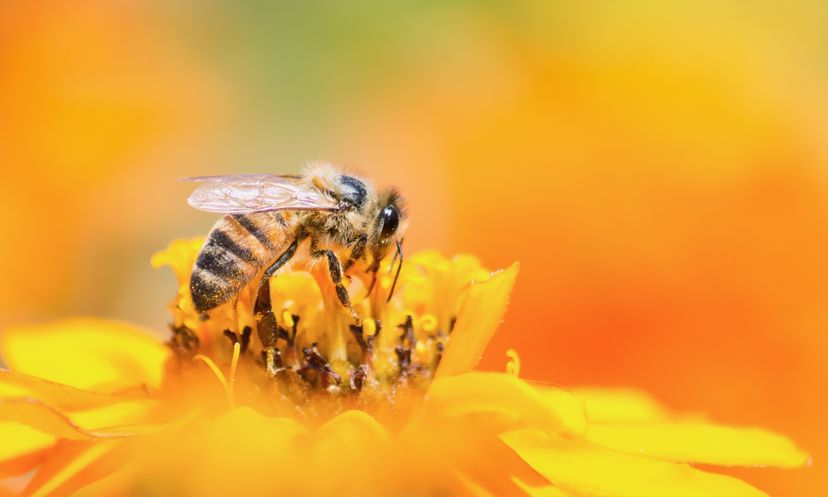
The diet of a bee consists primarily of pollen and nectar; they rely on the honey they produce during the winter months, when there isn't any nectar or pollen around.
There are over 10,000 recorded species of bees, which differ in size, color, and social habits, among other things.
Scientists have found fossils of bees from more than 80 million years ago.
Advertisement
The world's largest species of bee, Chalicodoma pluto, is about 1 1/2 inches (3.8 cm) long.
A colony of bees can house as many as 50,000 members, which makes bees among the most socially cooperative insects in the world.
The smallest bees in the world, Trigona minima, averages less than 1/12 of an inch, which is just two millimeters.
Advertisement
Worker bees can reach speeds of up to 15 miles per hour, which is quite impressive considering the size of their wings.
It takes 10 bees to collect enough nectar to produce one pound of honey. When you consider how much honey is on the market, you realize that's an astounding number of bees.
Bees and all other insects have a body made of three parts: head, thorax, and abdomen.
Advertisement
Attached to a bee's thorax are a pair of wings, and three pairs of legs.
Bees stingers evolved from an organ known as an ovipositor, which was originally used to lay eggs.
Most bees have a barbed stinger, which means that the stinger will get stuck inside it's victim. The stinger of a bumblebee has no barbs, so the bee can easily pull it out and use it again.
Advertisement
A bee's body is covered with fine hairs, which collect pollen when they come into contact with it.
Bees and other insects develop into adults by a process known as metamorphosis, during which they turn from larva to pupa to adult.
The average worker bee will complete it's metamorphosis in just 21 days.
Advertisement
The average worker bee lives around six to eight weeks.
Most bee colonies are made up of three types of bees: queens, drones, and workers. As with other types of insects, bees have no kings.
Honey bees are extremely active, visiting over 1,000 flowers per day. It is worth noting, however, that they remain loyal to a particular flower type for their entire lives.
Advertisement
Only bumblebees are indigenous to North America. The other species of bees were imported, mostly from Europe, beginning in the 17th century, to bolster the honey market.